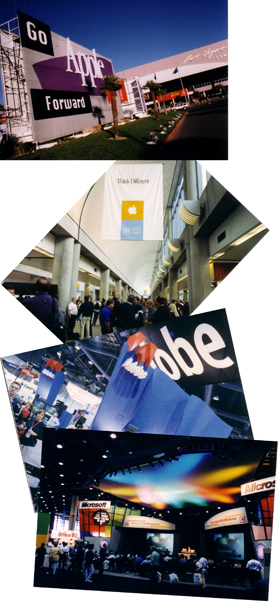Clients
I like to think that I’ve always been quite accountable in my design and marketing work.
During my marketing career at The Upjohn Company I was accountable to the company for the budgets I had, to the people I worked with for designing and producing marketing communications, and to my audiences for communicating effectively. These accountabilities had many dimensions during my years as an art director and product manager.
As the manager of worldwide conventions and exhibits, my accountabilities became more focused. I initiated a corporate program for developing new objective-based exhibits. With greater autonomous budget and project responsibilities from inception to installation, I began buying marketing research to evaluate results. I tracked internal data. Over time I built a behavior-based accountability model with on-site observation research, immediate response (event performance) survey research, and sales conversion (marketing effectiveness) survey research. I doubled the cost-effectiveness of our pharmaceutical exhibit program. I published articles, presented seminars, and accepted a leadership role in our industry trade association, attempting to foster accountability. I even presented an academic paper relating tradeshow research to modeling museum visitor experiences at a Visitor Studies Association meeting.
I like to say that I integrated the aesthetic immediacy of creation, with intellectual rigor.
When I opted for an early-out of my corporate career I built my own marketing accountability business based on my behavioral modeling. I had expected to build a client base among my contacts in the pharmaceutical industry. To my surprise, however, I found more fertile ground for serious accountability work in event marketing among high-tech companies on the west coast during their period of rapid growth in the 1990s. My conceptual model quickly became a statistical model as I evaluated event performance for a number of companies at all of the major computer shows like COMDEX and Macworld, and at company-sponsored events like Apple’s Worldwide Developer Conference.
 Clients included:
Clients included:
Adobe Systems Incorporated
Apple Computer, Inc.
Autodesk, Inc.
Claris Corporation (now FileMaker, Inc.)
MarketSource Corporation
RealNames Corporation
Santeler Marketing Group
Scribner Productions
Whelan and Associates
Principal marketing research firms:
With consistent metrics in a database of more than 15,000 respondents, my statistical accountability model grew very robust, with a number of salient trends emerging over time. Tactically, two important event marketing leverage points were identified: purchase readiness factors, and personality types. Strategically, important opportunities were identified for attracting new customers, cross selling, and upgrading.
As I obtain permissions to publish my articles here, and blind client proprietary information, I’ll find ways to expand this site to leverage the learning from my customer experience modeling of buying cycles and use cycles. While media and marketing variables evolve and change continuously, human behavior remains relatively constant. Thus, the value of behavioral modeling stands the test of time very well.

